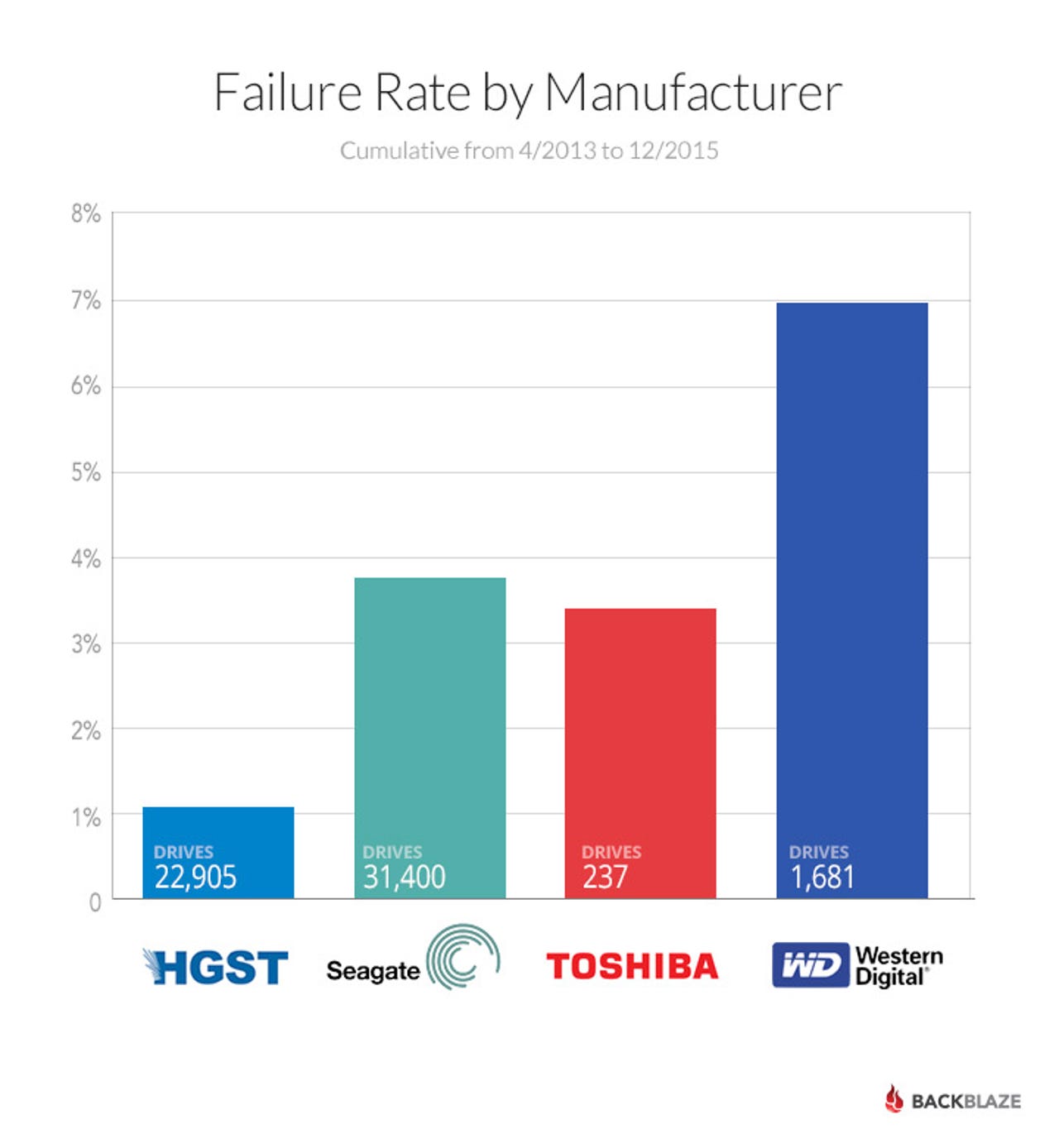The most reliable hard drives in 2015, according to Backblaze


Here's a surprise: Seagate hard drives may now be more reliable than Western Digital models, according to Backblaze's Hard Drive Reliability Review for 2015. The failure rates in the bar chart above are cumulative from April 2013 to the end of 2015, by which time the company had 56,224 hard drives containing customer data in 1,249 Backblaze Storage Pods.
Backblaze added around 65 petabytes of storage last year. The company says: "nearly all of the 16,000+ drives purchased in 2015 have been Seagate drives." Of those, "over 85 percent were 4TB Seagate drives."
Previously, some Seagate hard drives exhibited high failure rates, with almost a third of Backblaze's 3TB Seagate drives (ST3000DM001) failing in 2012. In September 2014, I reported that "the three least reliable drives tested are all Seagate Barracuda models. The Seagate Barracuda 7200.11 has had an annual failure rate of 24.9 percent, the 3TB 7200.14 of 15.7 percent, and the 1.5TB Barracuda LP of 9.6 percent." (See Who makes the most reliable hard disk drives? Backblaze has updated its stats)
As Robin Harris reported here in April, Backblaze eventually pulled the 3TB Seagate drives out of service.
Historically, HGST (formerly Hitachi Global Storage Technologies, but now owned by Western Digital) hard drives have been by far the most reliable, but in 2015, Backblaze still went for Seagate. The company explains that "the HGST 4TB drives, while showing exceptionally low failure rates, are no longer available having been replaced with higher priced, higher performing models. The readily available and highly competitive price of the Seagate 4TB drives, along with their solid performance and respectable failure rates, have made them our drive of choice."
Backblaze now reports that the Seagate 4TB hard drives had a failure rate of just under 3 percent, which was only a little higher than the 4TB WD models (barchart below).
There's an obvious reason for the improvement in Seagate hard drive reliability at Backblaze. By the end of the year, the company had removed all its 1TB, 2TB and 3TB Seagate drives and replaced them with 4TB and 6TB models.
Further good news is that the Seagate 6TB drives are performing "even better than the 4TB Seagate drives". However, the cost per terabyte is higher, and it's hard to buy them in large volumes. Also, they use 60 percent more power: 9.0W vs 5.6W.
"Today, we mix 6TB filled Storage Pods and 4TB filled Storage Pods in the same rack to optimize both power consumption and the storage space per square foot," says Backblaze.
The extraordinary reliability of Backblaze's 2TB HGST drives means the company is still running 4,500 of them. Backblaze says: "Their average age is nearly 5 years (58.6 months) and their cumulative failure rate is a meager 1.55 percent. At some point we will want to upgrade the 100 Storage Pods they occupy to 4- or 6TB drives, but for now the 2TB HSGT drives are performing very well."
It looks as though the 4TB and 6TB drives are sweet spots for high volume data storage, pending the arrival of high volumes of affordable 8TB drives. And while HGST drives may be more reliable, the 4TB and 6TB Seagates are reliable enough to be cost effective in Backblaze Storage Pods.